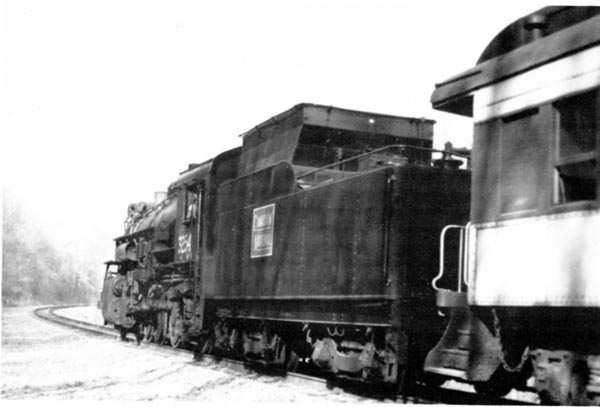
|
On the cover of the February, 1991, issue of Railfan &
Railroad, there was a beautiful picture of ex-Canadian National 2-8-2
number 3254, now at the Steamtown National Historic Site in Scranton,
Pennsylvania. When I first saw the picture, I muttered to myself, "Dumb
Americans, don't even know how to paint a CN engine properly." What had
offended my eye for detail was the Canadian National crest on the
tender.
Steam left my part of Ontario when I was around 18 years old. Although I must admit that young women and cars occupied more of my thoughts than trains around that period of greal hormonal activity, I thought that I was aware of what locomotives looked like. My memory was that locomotives either had the tilted (nine degrees) crest or a new rounded crest introduced in 1954 with the new passenger car colour scheme. I certainly remember the excitement of the new green and black scheme on the passenger cars. They too had the round crest at each end where the tilted red Canadian National wafer had formerly been. In fact, if I had to play "Railway Trivial Pursuit", I would have guessed that only passenger engines got the new round crest in the period between 1954 and the end of steam. This idea was reinforced by the fact that all the famous excursion engines - 6167, 6218, and 6060 - had the round crest. (At least a picture of 6060 at Jasper shows it with the round crest.) Much to my surprise, the excellent book Canadian National Steam Power by Clegg and Corley (Trains & Trolleys 1969) has an interesting chart on page 16. This chart indicates that some locomotives (emphasis on some) got either the round crest OR a crest that looked like the old one but was not tilted. Furthermore, when I looked through the book I found a number of locomotives which featured the untilted crest. These are listed below.
* a passenger locomotive
Of course, there were no examples of an S-l-b locomotive (the class of Steamtown'i 3254.) The 3466 (an S-l-f) mentioned abow comes the closest - but remember the warning that only "some" locomotives received the new crest. The 3466 further confuses the issue by having a Vanderbilt (round) tender so that it is hard to compare the placement of its crest with the one on the American locomotive. Anyhow, the wrapup on all this is that the U.S. National Park Service appears to have better researchers than my memory. So to Railfan & Railroad, I say thanks for forcing me to look at something I thought I knew a lot about.  Bytown Railway Society, Branchline, January 1992, page 12. |
